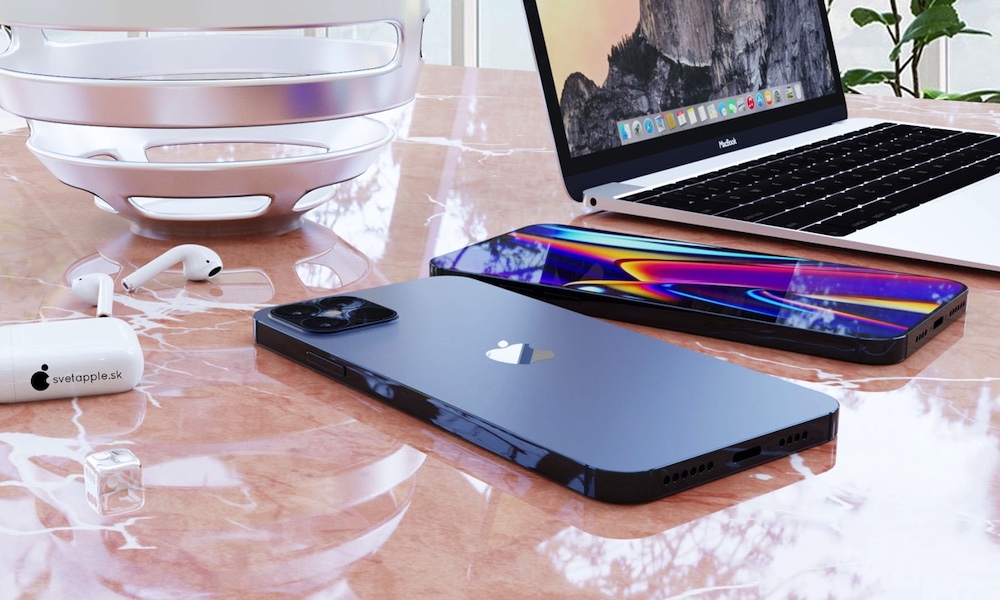What’s the Deal with the Ultra-Fast mmWave 5G iPhone 12?
 Credit: Svet Apple
Credit: Svet Apple
Toggle Dark Mode
Although there’s absolutely no question that Apple will be releasing a lineup of 5G capable iPhones this year, exactly what flavours of 5G technology will be supported still remain something of a mystery, with another recent spate of reports suggesting that the ultra-fast mmWave 5G technology could only be coming to some iPhone 12 models.
As far back as January, we heard a report that Apple could have been delaying the mmWave version of the iPhone 12 until early 2021 as a result of struggles it was having with developing its own Antenna-in-Package (AiP) modules.
However, this was subsequently refuted by reputable analyst Ming-Chi Kuo, who doubled-down on his earlier prediction that all four of the iPhone 12 models that are expected this year would include mmWave support, at least in major markets such as the U.S., Canada, Japan, Korea, and the U.K.
However, these predictions all came before the novel coronavirus pandemic shut down most of the world, potentially throwing a monkey wrench into Apple’s plans. Perhaps as a result of the challenges being faced by Apple’s engineers and its Chinese supply chain partners, analysts again predicted in April that the mmWave 5G iPhone might not be arriving in the fall, citing the same AiP problems that had been highlighted in January.
A dissenting opinion by another group of analysts a few weeks later suggested that the mmWave iPhone 12 would still be arriving, but only in the “U.S. version,” which seemed unusual considering how relatively far behind the U.S. is in its rollout of mmWave infrastructure, while also reiterating the earlier reports that the launch of the mmWave iPhone could be delayed as far as early December.
Only Half of This Year’s iPhones Will Get mmWave 5G
Now a new report from DigiTimes is backing up the fact that not all iPhone 12 models are going to include mmWave 5G, although it sadly doesn’t offer any insight into which models these may be.
Instead, DigiTimes simply notes that “shipments of mmWave-enabled 5G iPhones … are estimated to reach only 15-20 million units in 2020,” which is about half of the 30-40 million units expected to ship overall.
This could mean any one of several things, including the possibility that only the iPhone 12 Pro will get mmWave 5G, or that it will only roll out in some countries.
It doesn’t seem to directly point to a U.S.-only release, however, since the U.S. doesn’t account for half of all iPhone sales globally, but it could support Kuo’s original contention that the “U.S. version” will also be released in other countries.
Does It Matter?
At this point, other than a desire to simply have the latest and greatest technology in your iPhone, it’s hard to truly care all that much about a mmWave iPhone — unless you’re a Verizon customer in a major urban area, that is.
Although mmWave technology is considerably faster than the sub-6GHz alternative, it’s also been much more narrowly deployed. For example, in the U.S. only Verizon is offering wide mmWave coverage right now, and only if you happen to be in the downtown core of select cities.
Meanwhile, although T-Mobile has already rolled out its nationwide 5G network to well over 90% of the U.S., this relies on the lower 600MHz frequency.
In fact, a recent analysis of U.S. carriers shows that on most 5G networks in the U.S. right now, you’re unlikely to see download speeds that are much different than using 4G LTE on a good day, although each carrier’s 5G networks do consistently outperform its corresponding 4G LTE services.
The other catch is that mmWave 5G works at a much shorter range, which is why carriers have been considerably slower at rolling it out, and why you’re unlikely to find mmWave coverage outside of core urban areas.
In fact, unlike other U.S. carriers, Verizon has gone exclusively with mmWave, which means that unless you live in a major city, you’re going still going to be using 4G LTE anyway, no matter which 5G-capable iPhone model you end up with.
That said, when you can find mmWave 5G, it’s fast — staggeringly fast, in fact. For instance, Verizon’s 5G mmWave coverage can offer download speeds of over 500Mbps, rivaling most home broadband connections. Again, though, that does you no good unless you happen to be close to a 5G transceiver.
The other question that we always find ourselves asking, of course, is how fast you actually need your iPhone to be. While mmWave 5G will offer some great capabilities for people who tether more data-hungry devices like laptops in order to download larger files or stream Netflix in 4K, most people aren’t doing stuff like that on their iPhones, and keep in mind that even 4K Netflix streaming only requires 25Mbps of bandwidth. 500Mbps on an iPhone is serious overkill at this point.
Of course, the cellular landscape is changing fast, and since most users buying an iPhone 12 this year can be expected to hold onto it for two years or more, having an mmWave iPhone available will put you in a better place down the road as the technology evolves, plus if you’re on a carrier like Verizon, an mmWave iPhone is going to be the only way to take advantage of 5G technology at all, so we’d be very surprised if Apple doesn’t add mmWave to all of its U.S. iPhone models this year, since not doing so would leave Verizon customers out in the cold.
[The information provided in this article has NOT been confirmed by Apple and may be speculation. Provided details may not be factual. Take all rumors, tech or otherwise, with a grain of salt.]






